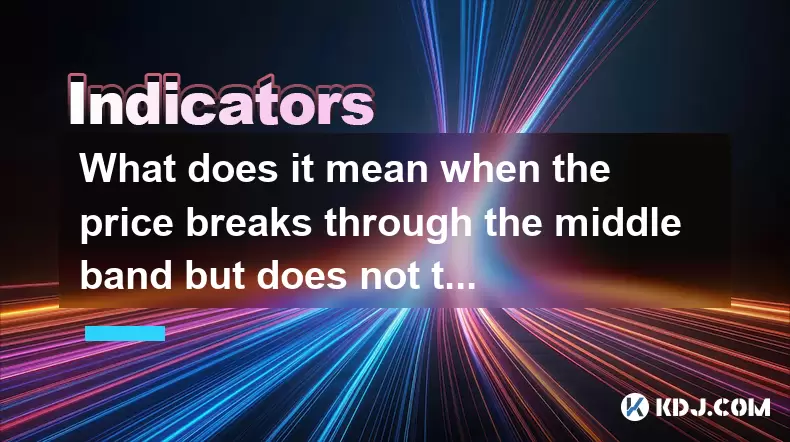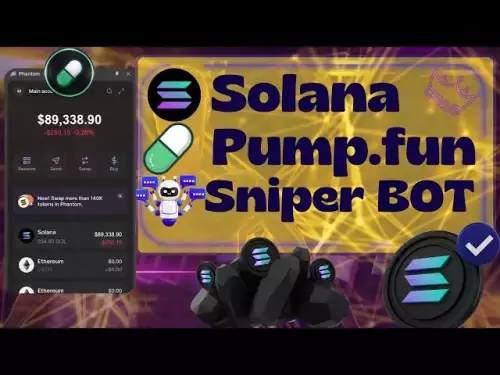-
 Bitcoin
Bitcoin $115100
-1.30% -
 Ethereum
Ethereum $4758
-1.70% -
 XRP
XRP $3.027
-2.19% -
 Tether USDt
Tether USDt $0.9998
-0.01% -
 BNB
BNB $883.2
-1.42% -
 Solana
Solana $204.0
2.62% -
 USDC
USDC $1.000
0.02% -
 Dogecoin
Dogecoin $0.2371
-0.97% -
 TRON
TRON $0.3612
-1.24% -
 Cardano
Cardano $0.9128
-2.19% -
 Chainlink
Chainlink $26.13
-3.93% -
 Hyperliquid
Hyperliquid $44.73
0.90% -
 Sui
Sui $3.715
-0.56% -
 Stellar
Stellar $0.4153
-2.41% -
 Ethena USDe
Ethena USDe $1.000
-0.04% -
 Bitcoin Cash
Bitcoin Cash $588.9
-2.06% -
 Avalanche
Avalanche $25.91
3.27% -
 Hedera
Hedera $0.2525
-1.45% -
 Litecoin
Litecoin $120.9
-1.35% -
 UNUS SED LEO
UNUS SED LEO $9.607
0.30% -
 Toncoin
Toncoin $3.382
-0.31% -
 Shiba Inu
Shiba Inu $0.00001329
-0.38% -
 Uniswap
Uniswap $11.38
-1.67% -
 Polkadot
Polkadot $4.222
2.83% -
 Aave
Aave $354.5
4.93% -
 Dai
Dai $0.0000
0.00% -
 Bitget Token
Bitget Token $4.704
-1.49% -
 Cronos
Cronos $0.1565
1.83% -
 Ethena
Ethena $0.7463
1.55% -
 Monero
Monero $265.8
-0.39%
What does it mean when the price breaks through the middle band but does not touch the upper band after the Bollinger Bands close?
A Bollinger Band squeeze followed by a break above the middle band without reaching the upper band suggests weakening bullish momentum and potential false breakout in crypto markets.
Aug 13, 2025 at 11:36 am

Understanding Bollinger Bands Structure and Components
Bollinger Bands are a widely used technical analysis tool in the cryptocurrency trading space. They consist of three lines: the middle band, which is typically a 20-period simple moving average (SMA); the upper band, which is the middle band plus two standard deviations; and the lower band, which is the middle band minus two standard deviations. These bands dynamically expand and contract based on market volatility. When volatility decreases, the bands narrow, indicating a "squeeze" or consolidation phase. When volatility increases, the bands widen, signaling potential breakout movements.
The concept of the bands "closing" refers to a period where the distance between the upper and lower bands reaches its narrowest point, often interpreted as a low-volatility phase. This is commonly known as a Bollinger Band squeeze. Traders watch this condition closely because it often precedes a sharp price movement. However, the direction of the breakout—upward or downward—is not guaranteed by the squeeze alone. The key lies in interpreting what happens after the squeeze resolves.
What Happens When Price Breaks the Middle Band After a Squeeze?
When the price breaks through the middle band after a Bollinger Band squeeze, it suggests a shift in momentum. The middle band acts as a dynamic support or resistance level depending on the trend. A breakout above the middle band in a recovering market may indicate that buying pressure is increasing. However, if the price does not reach or touch the upper band, it implies that the upward momentum is moderate or weakening.
This behavior can be observed in cryptocurrency charts where price escapes consolidation but fails to sustain strong bullish momentum. For example, after a prolonged sideways movement in Bitcoin, the bands contract tightly. When price moves above the 20-period SMA (middle band), traders may interpret this as a bullish signal. Yet, if the price stalls before reaching the upper band, it could reflect a lack of conviction among buyers. This scenario often results in a false breakout or a continuation of range-bound trading.
Interpreting the Failure to Reach the Upper Band
The failure to touch the upper band after breaking the middle band is a critical detail. In a strong bullish breakout, price typically pushes toward or beyond the upper band, reflecting high volatility and strong demand. When this doesn’t happen, several interpretations arise:
- The breakout lacks sufficient volume or market participation.
- Resistance exists just above the current price level, preventing further ascent.
- Sellers are stepping in early to cap the rally.
- The market is still in a transitional phase rather than a confirmed trend.
For instance, on a 4-hour Ethereum chart, if the Bollinger Bands have been squeezed for several periods and price rises above the middle band but stalls 5% below the upper band, it suggests that while bulls are active, they are not dominant. This kind of price action often leads to a retest of the middle band or a return into the band range.
Practical Steps to Analyze This Pattern
To effectively analyze this scenario, traders should follow a structured approach using both Bollinger Bands and supplementary indicators:
- Confirm the squeeze by observing the bandwidth, which is the percentage difference between the upper and lower bands. A significant drop in bandwidth indicates a squeeze.
- Monitor price action as it approaches and crosses the middle band. Look for candlestick patterns such as bullish engulfing or hammer formations that support the breakout.
- Check volume levels during the breakout. A genuine move usually comes with increased trading volume.
- Use the Relative Strength Index (RSI) to assess whether the market is overbought. If RSI is above 60 but not exceeding 70, it may support moderate bullishness.
- Apply horizontal support/resistance levels to identify nearby price zones that could limit upward movement.
For example, on a Binance BTC/USDT chart, set Bollinger Bands to default (20,2). Observe when the bands contract tightly. When price moves above the SMA, check if volume bars spike. If volume remains flat and price halts mid-channel, caution is warranted.
Common Misinterpretations and Risk Management
Many traders assume that any break above the middle band after a squeeze is a buy signal. This can lead to premature entries. The absence of a touch on the upper band should serve as a warning. Instead of entering a full position, consider partial entries or waiting for confirmation.
Risk management strategies include:
- Placing stop-loss orders just below the middle band if going long.
- Using a trailing stop to protect profits if price moves favorably.
- Avoiding trades during low-liquidity periods, such as weekends in crypto markets, where false signals are more common.
- Combining Bollinger Bands with volume profile to confirm whether the breakout occurs at a high-volume node.
For example, if Litecoin breaks above the middle band but volume is declining, it may be a fakeout. Exiting or avoiding entry in such cases preserves capital.
How This Pattern Fits Into Broader Market Context
This pattern does not exist in isolation. It must be evaluated within the broader market structure. For instance, if Bitcoin is in a long-term downtrend, a mid-band breakout in a smaller-cap altcoin may not sustain. Conversely, during a bull market, such breakouts have higher success rates.
Market sentiment indicators like the Crypto Fear & Greed Index can provide context. If the index is in "fear" territory, a mid-band breakout might reflect short-term relief rather than a trend reversal. On-chain data, such as exchange outflows, can also support or contradict the technical signal.
FAQs
What does a Bollinger Band squeeze indicate in crypto trading?
A Bollinger Band squeeze indicates a period of low volatility, where the upper and lower bands come close together. It often precedes a significant price move, though the direction is not predetermined. Traders watch for breakouts above or below the bands to determine the next trend.
Can a break above the middle band be bearish?
Yes, in certain contexts. If the overall trend is downward and the break above the middle band fails to reach the upper band, it may be a temporary retracement. This is often followed by a resumption of the downtrend, especially if volume is low.
How do I adjust Bollinger Bands settings for different crypto timeframes?
For shorter timeframes like 5-minute charts, consider using a 10-period SMA with 1.5 standard deviations to increase sensitivity. For daily charts, the default 20-period SMA with 2 standard deviations works well. Always backtest changes on historical data.
Should I trade every middle band breakout after a squeeze?
No. Not every breakout is valid. Wait for confirmation such as volume increase, candlestick patterns, or movement toward the upper/lower band. Trading every signal leads to overtrading and losses during choppy markets.
Disclaimer:info@kdj.com
The information provided is not trading advice. kdj.com does not assume any responsibility for any investments made based on the information provided in this article. Cryptocurrencies are highly volatile and it is highly recommended that you invest with caution after thorough research!
If you believe that the content used on this website infringes your copyright, please contact us immediately (info@kdj.com) and we will delete it promptly.
- Crypto, Pepe, and Investment: Navigating the Meme Coin Mania in 2025
- 2025-08-24 06:45:29
- Crypto Market Recovery: Unearthing ROI Gems in 2025
- 2025-08-24 05:25:35
- Aave, World Liberty, and Token Allocation: Decoding the DeFi Buzz
- 2025-08-24 05:25:35
- Crypto Presales & Exchange Launches: What's Hot Now?
- 2025-08-24 05:45:17
- Meme Coin Mania: Experts Rank Layer Brett as the Top Contender
- 2025-08-24 05:45:18
- Sui Price Prediction: Will the Breakout Move Stick?
- 2025-08-24 06:05:29
Related knowledge

What does it mean when the +DI and -DI cross frequently in the DMI indicator but the ADX is flattening?
Aug 11,2025 at 03:15am
Understanding the DMI Indicator ComponentsThe Directional Movement Index (DMI) is a technical analysis tool composed of three lines: the +DI (Positive...

What does the sudden appearance of a "dark cloud cover" candlestick pattern during an uptrend indicate?
Aug 13,2025 at 11:35am
Understanding the 'Dark Cloud Cover' Candlestick PatternThe dark cloud cover is a bearish reversal pattern in technical analysis that typically appear...

What does it mean when the moving average, MACD, and RSI all send buy signals simultaneously?
Aug 11,2025 at 01:42pm
Understanding the Convergence of Technical IndicatorsWhen the moving average, MACD, and RSI all generate buy signals at the same time, traders interpr...

What does it mean when both the KDJ indicator and the RSI show overbought signals simultaneously?
Aug 13,2025 at 11:35am
Understanding the KDJ Indicator in Cryptocurrency TradingThe KDJ indicator is a momentum oscillator derived from the Stochastic Oscillator, widely use...

What does it mean when the price is trading above the SAR indicator but the red dots are densely packed?
Aug 09,2025 at 11:49pm
Understanding the SAR Indicator and Its Visual SignalsThe SAR (Parabolic Stop and Reverse) indicator is a technical analysis tool used primarily to de...

What does it mean when the candlestick chart forms a "Morning Star" but trading volume is sluggish?
Aug 12,2025 at 06:28pm
Understanding the Morning Star Candlestick PatternThe Morning Star is a three-candle bullish reversal pattern commonly observed in cryptocurrency pric...

What does it mean when the +DI and -DI cross frequently in the DMI indicator but the ADX is flattening?
Aug 11,2025 at 03:15am
Understanding the DMI Indicator ComponentsThe Directional Movement Index (DMI) is a technical analysis tool composed of three lines: the +DI (Positive...

What does the sudden appearance of a "dark cloud cover" candlestick pattern during an uptrend indicate?
Aug 13,2025 at 11:35am
Understanding the 'Dark Cloud Cover' Candlestick PatternThe dark cloud cover is a bearish reversal pattern in technical analysis that typically appear...

What does it mean when the moving average, MACD, and RSI all send buy signals simultaneously?
Aug 11,2025 at 01:42pm
Understanding the Convergence of Technical IndicatorsWhen the moving average, MACD, and RSI all generate buy signals at the same time, traders interpr...

What does it mean when both the KDJ indicator and the RSI show overbought signals simultaneously?
Aug 13,2025 at 11:35am
Understanding the KDJ Indicator in Cryptocurrency TradingThe KDJ indicator is a momentum oscillator derived from the Stochastic Oscillator, widely use...

What does it mean when the price is trading above the SAR indicator but the red dots are densely packed?
Aug 09,2025 at 11:49pm
Understanding the SAR Indicator and Its Visual SignalsThe SAR (Parabolic Stop and Reverse) indicator is a technical analysis tool used primarily to de...

What does it mean when the candlestick chart forms a "Morning Star" but trading volume is sluggish?
Aug 12,2025 at 06:28pm
Understanding the Morning Star Candlestick PatternThe Morning Star is a three-candle bullish reversal pattern commonly observed in cryptocurrency pric...
See all articles

























































































